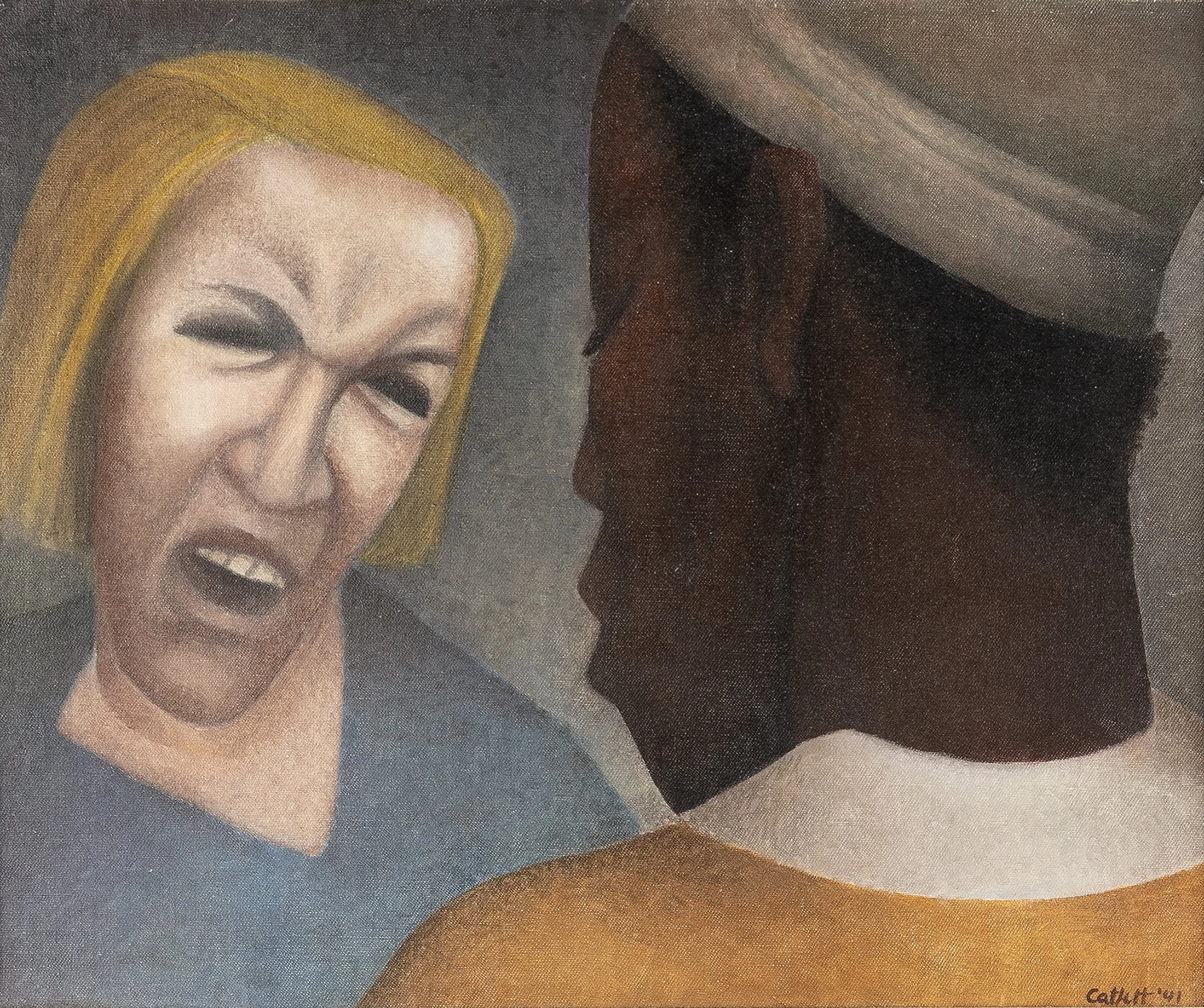
Elizabeth Catlett
(1915-2012)
untitled, Confrontation
1941
oil on canvas
15 x 18 inches
signed and dated
Cabeza Indigena
1955
Lithograph on wove paper
12-1/8 x 10-1/2 inches (image)
21-7/8 x 16-7/8 inches (sheet)
Signed and numbered 7/20; dedicated, To Hallie, with love
This early image by Catlett rarely comes to market and is in the permanent collection of the National Museum of Mexican Art in Chicago.
Sculptor, printmaker, educator, and activist, Elizabeth Catlett has brought dignity, strength, and beauty to Black and Mexican women through more than seven decades of work. Born in Washington, D.C., to a family whose roots traced back to formerly enslaved ancestors, Catlett channeled her heritage into art that spoke directly to the experiences of Black women and the working class.
After graduating from Howard University in 1935, where she studied design, printmaking, and drawing, she continued her graduate work at the University of Iowa School of Art and Art History, and in 1940 became the first African American student to receive an M.F.A. in sculpture from the school. Her master's thesis, the sculpture Mother and Child, earned first prize at the American Negro Exposition.
Eager to continue her education, she studied ceramics at the Art Institute of Chicago (1941), lithography at the Art Students League of New York (1942-43), and independently with sculptor Ossip Zadkine in New York (1943). In 1946, Catlett received a Rosenwald Fellowship that allowed her to travel to Mexico City with her then husband, Charles White, where she studied wood carving with Jose L. Ruiz and ceramic sculpture with Francisco Zuniga.
Catlett also joined the politically charged Taller de Gráfica Popular, a group of printmakers dedicated to using their art to promote social change.
The TGP inspired her to reach out to the broadest possible audience, which often meant balancing abstraction with figuration. In this way, she solidified her personal oeuvre, which merged printmaking and sculpture with social realism and revolutionary activism. Her prints from this period (from Sharecropper to portraits of Harriet Tubman) powerfully affirmed Black identity and resistance to oppression. The U.S. government eventually labelled her an "undesirable alien," prompting her 1962 decision to renounce her U.S. citizenship and later become a Mexican citizen.
Catlett's work continues to receive notable recognition through major retrospectives. From September 2024 to January 2025, the Brooklyn Museum presented Elizabeth Catlett: A Black Revolutionary Artist and All That It Implies. The National Gallery of Art followed with an even more expansive show through July 2025, featuring over 150 works—including sculpture, prints, rare drawings, and archival materials.
These exhibitions underscore her unique blend of aesthetic mastery and political expression, marked by bold forms (like Black Unity, 1968), maternal icons, and portraits of influential Black figures such as Tubman and Sojourner Truth.
© 2003 Estate of Nancy Lee Katz
Cabeza Contando
1960
bronze on a wooden base
9-3/4 inches (h)
initialed, E.C.
Lovey Twice
1976
lithograph
15-3/4 x 21-1/2 inches, full margins
signed, dated, titled, with III
Waving
1989
lithograph on cream wove paper
23 x 17 inches, full margins
signed, titled, dated and numbered, 11/100